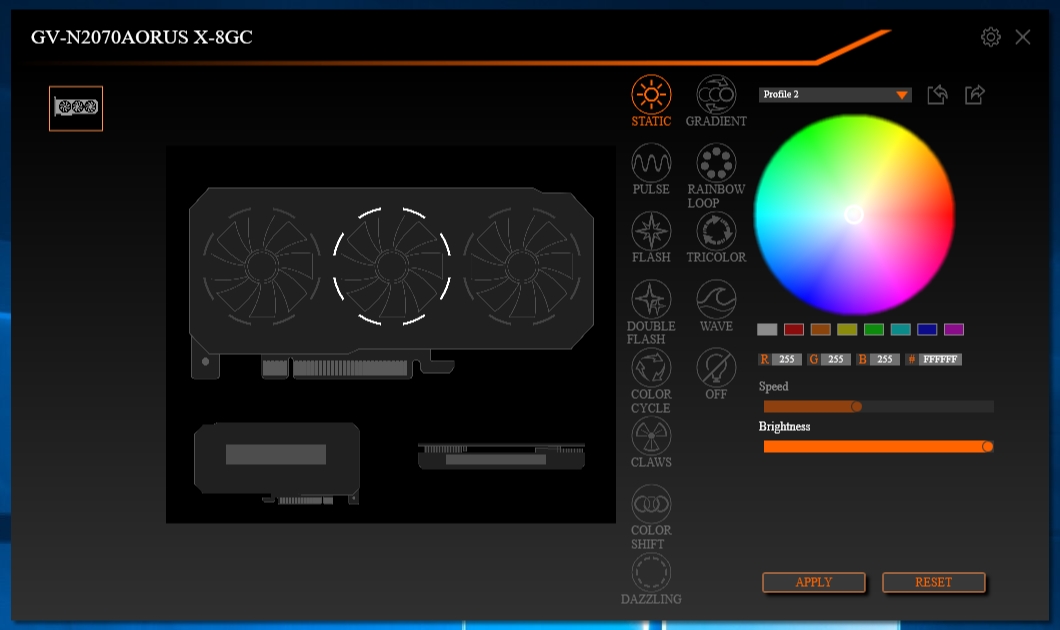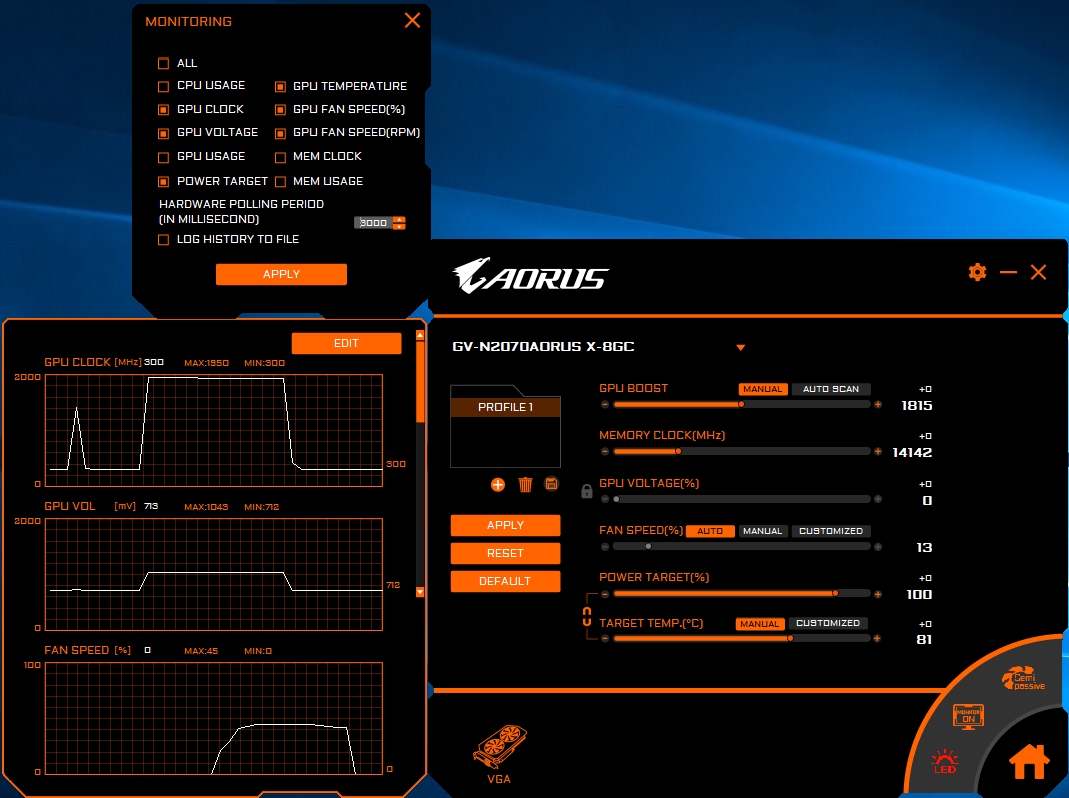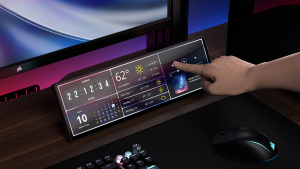GIGABYTE RTX 2060 GAMING OC PRO Review
The Software: AORUS Engine

As expected, GIGABYTE uses the AORUS engine for graphics card configuration. This includes the usual system hardware OSD function, fan control and GPU performance controls (GPU clock, Memory clock, GPU voltage, Power & Temperature threshold). It covers all the basics, but is lacking when it comes to the user interface, its’ intuitiveness or lack thereof. There are better software packages than this from competitors and the two which come to mind are AfterBurner and Precision X. The issues with the AORUS engine are numerous, including its’ unresponsiveness, lack of true visual customization (layout), fixed window sizes and general usability issues. Small orange text against black, makes it difficult to read. Among the many missing features is a screenshot utility, video recording capabilities and just about any other function found in the two leading graphics card utilities. As it stands the AORUS engine shares many if not all of the same usability limitations as the ROG GPU Tweak utility.

The only thing you really need is RGB Fusion for configuring the GIGABYTE LED colour. For everything else there are better tools. Software is the single weakest part of this graphics card and this is emblematic of the motherboards too where they seem to fall apart in the software department, while everything else is par excellence. This interface while functional is rather crude. Here you will find all the colour configuration options that you’d expect. There isn’t any way to sync up the rest of your GIGABYTE hardware, but each supporting component or peripheral will be added to the left of the screen with its own icon.
 The AORUS Engine has many of the typical dials for configuring the graphics card, but ultimately, you’re better off with 3rd party or another vendor’s software. This application simply isn’t as responsive as it should be in addition to lacking some functionality as detailed earlier. Not obvious in the screenshot, but there’s an obvious lag in the software. Setting clocks to when they are actually applied takes an unnecessarily long time.
The AORUS Engine has many of the typical dials for configuring the graphics card, but ultimately, you’re better off with 3rd party or another vendor’s software. This application simply isn’t as responsive as it should be in addition to lacking some functionality as detailed earlier. Not obvious in the screenshot, but there’s an obvious lag in the software. Setting clocks to when they are actually applied takes an unnecessarily long time.








